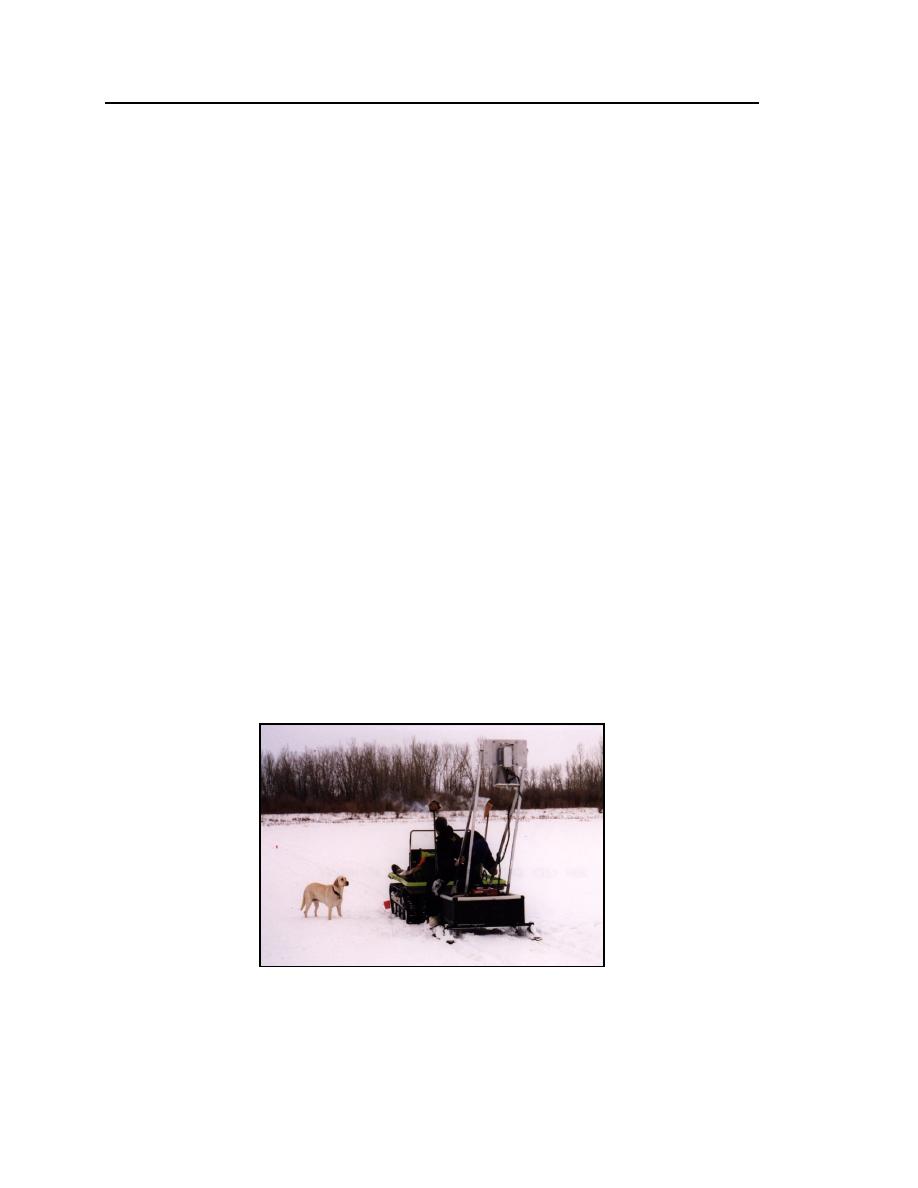
46
ERDC/CRREL TR-02-14
obtain a continuous profile of the bed, because a solid mechanical coupling must
be kept between the acoustic transducer and the ice surface. This constraint is not
a problem with GPR, but GPR has other drawbacks.
Successful bed and sub-bed profiling with GPR depends on the water's con-
ductivity. The lower the conductivity, the greater the possibility of successful
radar profiling. With higher levels of water conductivity, the radar signal energy
is attenuated to levels below the resolution of the radar receiver. The water in this
reach has a high conductivity; at the Vournas site, water conductivity measured
714 mmhos/cm, and at the Tveit-Johnson site, it measured 602 mmhos/cm. These
values are consistent with published values (e.g., Hopkins and Tilstra 1966).
Unfortunately these high levels made continuous bed profiling using radar infea-
sible, and the technique was abandoned during the January survey. We resorted
to measuring the bed elevation at discrete points along the cross section in con-
junction with the velocity measurements described below.
Ice thickness measurements
During the January survey, ice cover thickness along each cross section was
profiled using microwave FM-CW radar. This technique has been successfully
used for measuring the thicknesses of freshwater ice sheets on rivers and lakes
from ground and airborne platforms (e.g., Yankielun et al. 1993).
At the survey cross sections, a Ku-band radar (1826.5 GHz) was towed
across the ice by an all-terrain vehicle. The radar antenna was mounted on a sled,
with the antenna approximately 6 ft above the ice cover (Fig. 27). Radar profiles
were made of the ice cover, and the cross-section stations were marked on the
Figure 27. Sled with microwave radar towed by an
all-terrain vehicle.



 Previous Page
Previous Page
